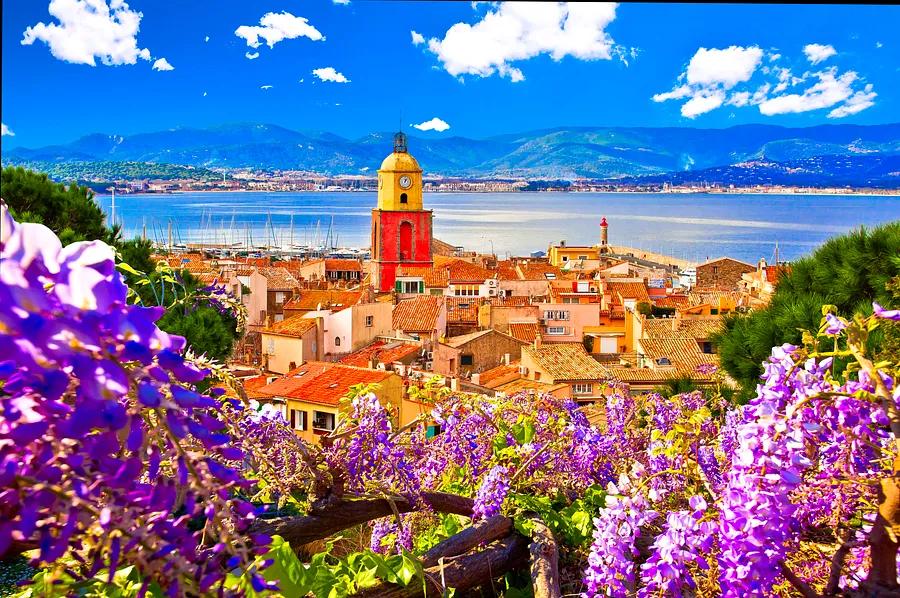Tomonoura: A serene coastal village in Japan, far from the hustle and bustle of tourists

Yuri Koshimizu, the shopkeeper, kindly takes the time to explain the purpose of a simple wooden box hanging from the ceiling, above a collection of homeishu (medicinal liquor), clay statues, and homemade soaps.
She explains that it’s meant for the swallows. The box catches the droppings from their nest positioned above it.
“They migrate through from May to August,” she says, chuckling as she points to a small hole in the door, which lets the birds come and go even when the Homeishuya shop is closed.
“I believe it’s the same pair that returns every year.”
In Japan, swallows are regarded as symbols of good fortune.
However, it’s not just luck that has shielded Tomonoura, a historic village in Hiroshima prefecture, which has held its coveted position along the Seto Inland Sea for over 1,400 years.
Nature itself, along with the lack of industrialization that transformed other coastal cities like Kobe and Hiroshima after the fall of the shogunate in the 19th century, has helped preserve a rich collection of Edo-period architecture (1603-1868) that few other seaside towns can boast. Local grassroots efforts have played a role too.
Despite its population of around 3,350, Tomonoura remains a peaceful, quiet village, offering a tranquil escape from the overcrowded cities of Tokyo, Kyoto, and other tourist hotspots.
Locally, it’s recognized as the filming location for Marvel’s “The Wolverine” and as the inspiration behind Studio Ghibli’s animated film “Ponyo on the Cliff by the Sea,” directed by Hayao Miyazaki, who reportedly stayed in the area for two months while working on the project.
Despite its easy accessibility with just a 30-minute bus ride from Fukuyama Station, a stop on the Shinkansen line connecting Tokyo and Hiroshima, Tomonoura remains relatively unknown to international visitors. Once you arrive, the small, historic district is best explored on foot.

The harbor awaiting the tide
Nestled in the heart of Setonaikai National Park, Tomonoura lies within one of Japan’s first national parks, established in 1934. The park spans the Seto Inland Sea and stretches across the coasts of Honshu, Shikoku, and Kyushu. With around 3,000 mostly uninhabited islands, this protected area also features beaches, coves, bays, and dramatic capes.
Cities within the park’s boundaries, including Tomonoura, offer expansive views of the sea and surrounding islands.
Although the exact origins of Tomonoura remain unknown, it appears in eight of Japan’s earliest tanka poems, composed between 600 and 750 CE.
Situated on a peninsula where the east and west currents meet, Tomonoura’s port thrived as a vital point of convergence.
Because ships had to wait for favorable tides and winds before they could set sail, Tomonoura became known as a shiomachi no minato, or “port waiting for the tide.”
The tides are believed to have brought a diverse range of travelers to Tomonoura, including merchants, feudal lords, warriors, pirates, writers, revolutionaries, Dutch traders from Nagasaki, and Korean envoys.
Things have calmed down since then, but many of Tomonoura’s early visitors would still recognize its quaint, circular harbor, with narrow alleys radiating outward, flanked by traditional townhouses, temples, and shrines. Around 280 buildings from the Edo Period remain, including more port-related structures than in any other part of Japan.
The 36-foot Joyato, Japan’s tallest stone lighthouse, continues to be the spiritual heart of the harbor, where many fishing boats are docked. Below the lighthouse, a 24-step stone pier leads into the sea, designed to allow cargo to be loaded and unloaded no matter the tide.

Exploring the town
The only road through town, nestled between mountains on one side and the sea on the other, appears surprisingly unassuming. Signs encourage pedestrians to stay on the edges of the road (as there are no sidewalks) rather than wander down the middle.
Wandering through town is the true joy, with village life unfolding before your eyes. People stroll with their dogs, fishing boats come and go, and a man peddles fresh seafood from the back of his truck.
Tomo, as locals affectionately call it, has a nostalgic charm, seen in shops like Hirai Shoten. Wooden shelves are stocked with bread, dish detergent, and other daily essentials, but the Japanese lantern outside signals that their specialty is oden, a beloved Japanese comfort food.
And there it is, bubbling away in a black iron pot next to a small table and a couple of chairs. When the owner lifts the lid, the savory scent of a hearty stew made of fish cakes, boiled eggs, daikon radish, fried tofu, and other ingredients fills the air.
Tomo’s English-language map of historic sites highlights over two dozen temples and shrines, but a stop at the Burial Mound of the Severed Head of Yamanaka Shikanosuke is hard to resist. A loyal servant who tried to raise an army after his master’s death, Yamanaka lost his head, which was displayed here for all to see.
The Edo Period is rich with stories like these.
Fukuzenji Temple, constructed around 950, is known for its reception hall, Taichoro, built in traditional Japanese style with tatami mats and perched on a cliff with a stunning view of the sea.
The views today resemble what they must have looked like in the past, with the uninhabited Benten Island and its pagoda across the channel, and Sensui Island just beyond.
Every 20 minutes, a vessel resembling a 150-year-old steamship makes a brief five-minute journey between Tomo’s waterfront and Sensui.
The local ferry was crafted by a nearby shipyard as a replica of the Irohamaru, a ship once commandeered by the samurai Ryoma Sakamoto, which met its demise in 1867 after a collision with an opposing clan’s steamship.
History books tell us that Ryoma sought compensation for his troubles and won, but was tragically assassinated shortly after in Kyoto. An Edo-era warehouse now serves as a museum dedicated to this folk hero, displaying maritime artifacts recovered from the sea.

The birthplace of homeishu
The Ota Residence is the most prominent townhome in Tomo, a grand complex comprising nine buildings, including the two-story main house, storehouses, and a brewery dedicated to producing homeishu.
The Nakamura family, skilled in Chinese herbal medicine, created homeishu in 1659, a medicinal liquor made from 16 different herbs and plants. They were later granted exclusive rights to its production and sale, holding a monopoly throughout the Edo Period.
The health tonic became a popular drink among visiting feudal lords and wealthy merchants. It was even served to the renowned US naval officer Commodore Perry during his landmark visit to Shimoda in 1853.
Today, four homeishu breweries continue the legacy, including Homeishuya, the sanctuary of the swallows. However, since the Nakamuras never revealed their recipe, each brewery’s version of homeishu differs depending on its blend of spices, such as ginseng, cinnamon, licorice, clove, saffron, and fennel.
Okamoto Kametaro Honten, originally a sake producer since 1855, transitioned to brewing homeishu during the Meiji Period (1868-1912) after acquiring the Nakamura family’s brewing equipment and iconic dragon signboard.
Ryochi Okamoto, a sixth-generation brewer, is dedicated to his traditional brewing process, which begins with crafting his own mirin, a sweet rice wine with a lower alcohol content.
Homeishu can be savored neat, on the rocks, mixed with soda, or used as a base for cocktails. To cater to younger tastes, Okamoto also offers variations infused with plums, apricots, or ginger.
What about the supposed health benefits of homeishu?
“It’s great for improving blood circulation and can help warm up cold fingers and toes,” says Okamoto. “Mostly, it serves as an internal cleanse.”
Tomonoura is also renowned for its metalworking industry, born from the need for anchors and nails for ships waiting for the tides. While only about 10 companies remain, Sangyo Corporation stands out for blending modern computerized techniques with traditional craftsmanship.
Like Okamoto, Hiromasa Hayama, the third-generation president of Sangyo, is eager to attract younger customers with products such as camping skillets, metalworking classes, and a trendy shop called Santo, which even features a bar.
When it comes to accommodations, Tomonoura offers a range of seaside hotels. One standout is Ofutei, which boasts a rooftop rotenburo (outdoor bath) for guests to enjoy the sea breeze while soaking.

Nearby adventures
If you have the time, consider taking the Heisei Iroha Maru ferry to Sensui Island, where you can enjoy a beach perfect for swimming and a unique hotel named Jinseikan Ga Kawaru Yado Koko Kara, which roughly translates to 'where your perspective on life will change.'
The tatami rooms offer a tranquil atmosphere with serene views, and the restaurant presents a full-course menu featuring sea bream, a local delicacy. Many visitors come specifically to experience the hotel’s Edo-style public bath, a series of ancient, cave-like saunas infused with mugwort, loquat leaves, and seaweed. Guests alternate between these saunas and dips in both cold and warm water, as well as the sea.
A notable excursion is Abuto Kannon, a striking vermillion temple located four kilometers (2.5 miles) from Tomo, perched on a rocky cliff overlooking the sea.
Built by warlord Terumoto Mori in 1570 and dedicated to the 11-faced Goddess of Mercy, the temple attracts sailors seeking safe voyages and expectant mothers praying for safe deliveries and a steady milk supply.
This explains the unusual sight of handmade rice-filled models of breasts, left by grateful mothers in thanks for a safe delivery.
Another fascinating spot is Shinshoji Zen Museum and Gardens, located a 25-minute taxi ride from Tomonoura or Fukuyama Station. Hidden deep in the woods, this Rinzai Zen temple offers a peaceful retreat as you wander its stunning Garden of the Appreciating Heart. Its pond, adorned with mossy mounds, boulders, dwarfed pines, and waterfalls, is rich in symbolic meaning.
Shinshoji also offers a range of traditional experiences, including tea houses, a monk’s udon lunch, a bathhouse, zazen (seated meditation), sutra copying, and an impressive collection of Zen artwork by Hakuin (1686-1769).
KOHTEI, a mesmerizing structure resembling a floating celestial object, was created in 2016 through the collaboration of sculptor Kohei Nawa and architectural team SANDWICH. It acts as a venue for contemporary Zen art, where light and shadows gently interact with images of rippling water.
Visitors have the option to stay for just a few hours or dive deeper into a more immersive overnight Zen retreat, lasting either one or two days.

1

2

3

4

5
Evaluation :
5/5